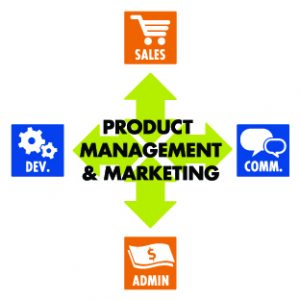Why Revenue Acceleration Often Fails
 Revenue acceleration often fails because companies skip a crucial step: developing the communication that will scale the sales efforts.
Revenue acceleration often fails because companies skip a crucial step: developing the communication that will scale the sales efforts.
In our previous blogpost, we discussed how ERP-vendor Navision (whose product is now known as Microsoft Dynamics NAV) in its early years managed to achieve significant revenue acceleration.
Due to the short format, we skipped a couple of background items that we’ll pick up in this and following posts. First of all, it’s evident that the software developer was in pretty good synch with the market. Navision had experience from the existing sales channel. This work yielded valuable feedback and requests for new functionality. And the small developer was very sharp in translating that into product functionality.
How IBM accelerated Navision revenues
Navision didn’t have a Product Management function per se. But the North-to-West flow from the Sales box in our figure, above, through Product Management & Marketing, to Development worked very well. Any given company might not have all the boxes in our figure as real or conscious functions. But that doesn’t mean that those functions are not performed – at some level.
What IBM then did very well in this model was to take the product and, through a product marketing function, create the product communication. That is, communication elements that the sales channel could use to explain the product’s benefits to the market. In terms of our model, that’s West to East, followed by East to North – both via Product Management & Marketing in the middle.
In our experience, where IBM succeeded is where most companies fail.
Why do companies skip this crucial step?
“The usual method” is more like: “Great, our product is ready, let’s hire some salespeople.” This method not only skips the communications part of it – it usually attempts to go straight from Development to Sales, bypassing Product Management & Marketing in its entirety. And the expected sales never materialize, or if they do, it’s through a painfully slow process.
Such attempts to short-circuit the marketing and communications process are responsible for thousands of derailed sales careers. And probably thousands of soured angel and venture capital relations. So why do companies, and investors for that matter, so often skip such vital steps?








